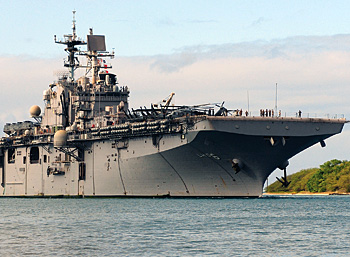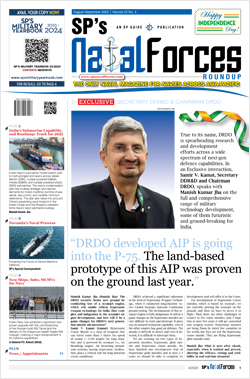INDIAN ARMED FORCES CHIEFS ON OUR RELENTLESS AND FOCUSED PUBLISHING EFFORTS

The insightful articles, inspiring narrations and analytical perspectives presented by the Editorial Team, establish an alluring connect with the reader. My compliments and best wishes to SP Guide Publications.

"Over the past 60 years, the growth of SP Guide Publications has mirrored the rising stature of Indian Navy. Its well-researched and informative magazines on Defence and Aerospace sector have served to shape an educated opinion of our military personnel, policy makers and the public alike. I wish SP's Publication team continued success, fair winds and following seas in all future endeavour!"

Since, its inception in 1964, SP Guide Publications has consistently demonstrated commitment to high-quality journalism in the aerospace and defence sectors, earning a well-deserved reputation as Asia's largest media house in this domain. I wish SP Guide Publications continued success in its pursuit of excellence.
Amphibious Operations
Landing on Hostile Shores

A sea base amphibious operations eliminates the need to establish shore facilities thus reducing the requirement of men and material. But such a concept will require a powerful navy to establish and protect the sea base.
Amphibious flexibility is the greatest strategic asset that a sea power possesses.
— B.H. Liddell Hart
All Maritime nations have to rely upon the seas for commerce, to respond to any crises or to guard their national interests. in the coming decades, population pressure, strive for access to diminishing resources, increasing requirement of energy by developing nations, deteriorating environmental conditions coupled with changing societal and cultural changes would lead to instability. The increase in seabased terrorist, drug smuggling backed by force, hostage taking, piracy at sea, weak and impoverished governments or threatened dictatorships, will all require forces equipped, trained to be flexible, who would react rapidly and respond effectively. Maritime security analysts are of the view that with the current and future geopolitical environment, aircraft carriers and amphibious forces with suitably embarked forces like the marines, will play a major role in all sea operations. as a prerequisite such forces will be joint, will have to embark ashore in hostile conditions and carry infantry or marines to counter the local forces.
Amphibious Operations Environment
- The target countries will be in the littorals where a large portion of the world’s population lives.
- The target countries involved will be hostile or partly hostile and thus getting their support will be a challenge and will require peacetime engagement. During war this may involve acquiring lodgment areas by force.
- Rise in population which is also threatened by famine, disease and natural disasters. Social instability will be added to over urbanisation. By 2025, the world population will increase by more than 30 per cent out of which more than 60 per cent will live in urban areas.
- Limited natural resources which are required by many competing nations will create conflict situation.
- The adverse effects of climate change may also add to problems due to tsunami, cyclones, coastal flooding, etc.
- Internet allows rapid movement of information which can precipitate crisis.
- War including conflict, conventional war, irregular warfare and terrorism can provide mixed challenges which can be posed by nations, proxy forces, armed or non-violent groups. The Jasmine revolution in Tunisia triggered revolutions in Egypt and Libya with other Middle East countries also attempting similar revolutions to expose dictatorship and human suffering. Armed intervention by other nations for whatever reason will imply acquiring capability to operate in the littorals.
Littoral
The littoral comprises of two areas. The first area is the seaward portion which must be controlled to support operations ashore. The second is the landward portion which is inland from the shore and is required to be defended directly from the sea.





